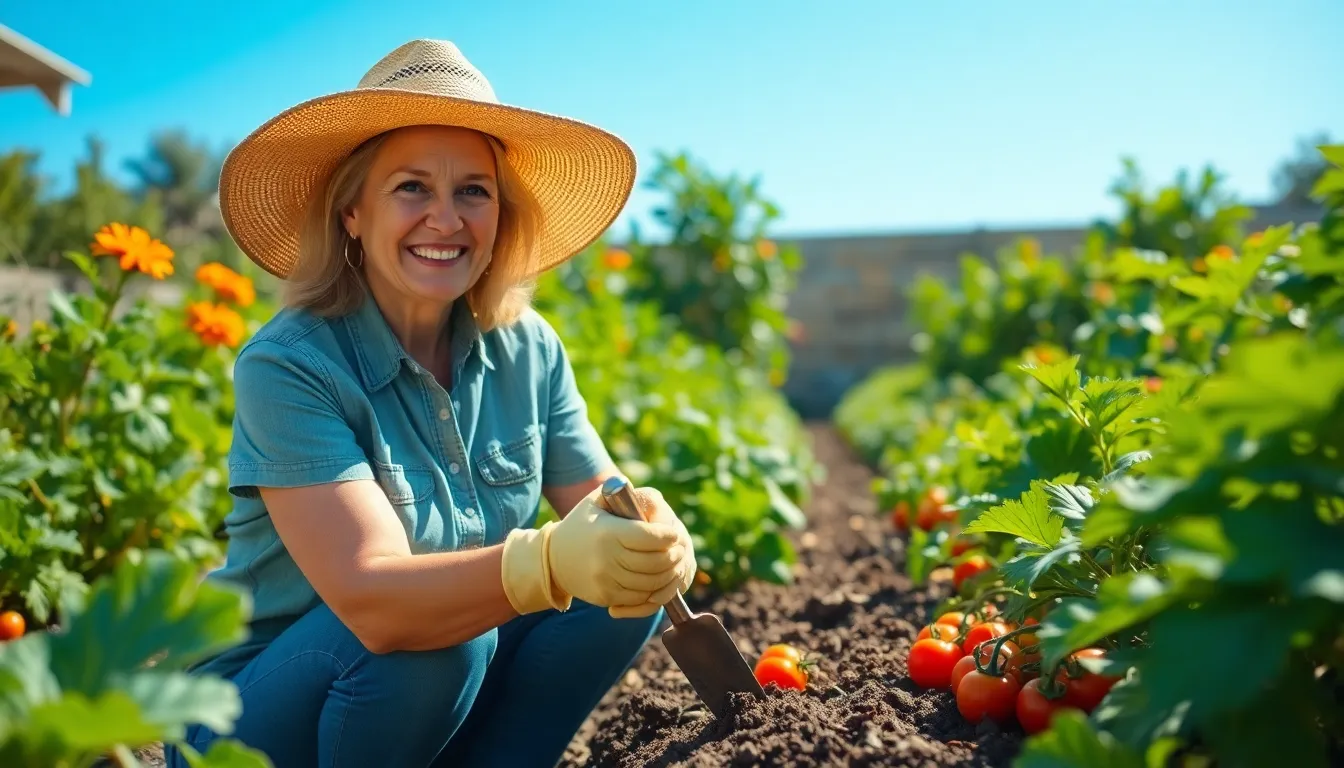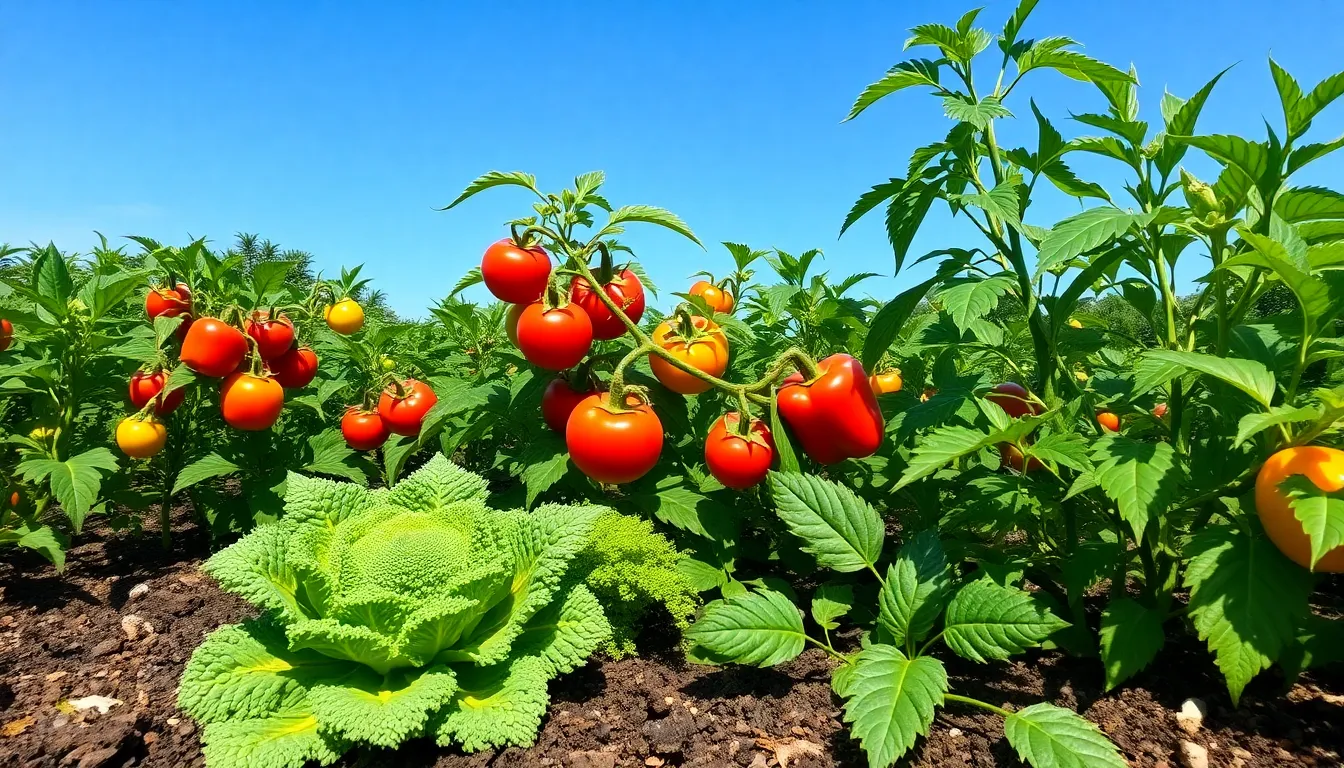Phone:
(701)814-6992
Physical address:
6296 Donnelly Plaza
Ratkeville, Bahamas.

In the Sunshine State, growing your own vegetables isn’t just a hobby; it’s a lifestyle. Imagine stepping into your backyard and plucking a ripe tomato or crunchy cucumber, all while basking in the warm Florida sun. With its unique climate and diverse growing seasons, Florida offers a gardening paradise that even the most seasoned green thumbs can appreciate.
But let’s face it—Florida gardening can feel like a wild ride. From battling pesky pests to deciphering soil types that seem to have a personality of their own, it’s a challenge that can make even the most dedicated gardener scratch their head. Fear not! This guide is here to help transform that confusion into a flourishing garden. Get ready to dig in and cultivate a vegetable oasis that’ll have your neighbors green with envy.
Florida’s climate allows year-round vegetable gardening, making it a gardener’s paradise. Understanding the best planting times is crucial. Typically, spring and fall provide optimal conditions for most vegetables. Some crops, including tomatoes and peppers, thrive from late winter into early spring, while others, like beans and corn, flourish in the summer months.
Soil quality significantly impacts garden success. Many Florida soils are sandy, which drains well but needs organic matter. Incorporating compost improves soil structure and nutrient content. Regularly testing the pH levels can indicate whether amendments are necessary to create optimal growing conditions.
Pest management also plays an essential role in Florida gardening. Beneficial insects like ladybugs help control pest populations naturally. Regular inspections of plants can identify pest issues early. Organic solutions, such as neem oil or insecticidal soap, effectively manage insect problems while being environmentally friendly.
Choosing the right vegetables adapts to Florida’s unique environment. Popular choices include squash, cucumbers, and okra, which perform well in warm temperatures. Native plants, such as sweet potatoes and black-eyed peas, often require less water and care, making them suitable for Florida gardens.
Watering practices require attention. Deep watering encourages strong root systems, while frequent shallow watering can promote weak growth. Mulching around plants conserves moisture and suppresses weeds, reducing the need for constant maintenance.
Seasonal changes influence garden planning. With warm winters, gardeners can extend the growing season with careful selection of heat-tolerant varieties. Experimenting with different plant combinations can lead to a diverse and fruitful garden that showcases Florida’s agricultural bounty.

Florida’s climate supports a diverse range of vegetables, maximizing the gardening potential year-round. Knowing which crops to cultivate ensures a thriving garden.
Cool-season vegetables perform best when planted between fall and early spring. Broccoli, spinach, and lettuce flourish during these months, offering fresh greens. Carrots thrive in cooler soil, providing a crunchy texture and sweet flavor. Cabbage and peas also adapt well, developing robust growth before the heat intensifies. Planting these varieties allows gardeners to enjoy bountiful harvests before the warm weather sets in.
Warm-season vegetables prefer planting in spring and summer as temperatures rise. Tomatoes, a popular choice, produce vibrant fruit abundant in flavor. Bell peppers thrive in the heat, showcasing a variety of colors. Okra grows quickly, yielding an impressive harvest due to its strong resilience. Corn needs full sun and plenty of space, making it ideal for a sunny plot. These vegetables not only enhance Florida gardens but also contribute to flavorful dishes year-round.
Planning and preparing a vegetable garden in Florida involves understanding the unique environment and optimizing conditions for growth.
Soil testing promotes healthy plant growth. Conduct routine tests to assess nutrient levels and pH balance. Many Florida soils are sandy and may lack essential nutrients. Adding organic matter such as compost improves both texture and fertility. Amend soil with fertilizers based on test results. Regularly check for deficiencies in nitrogen, phosphorus, and potassium. Correct any issues promptly to enhance overall productivity.
Garden layout impacts plant health and productivity. Choose a layout that allows optimal sunlight exposure, typically six to eight hours daily. Raised beds promote drainage and soil warmth, making them ideal for Florida’s climate. Space vegetables appropriately to prevent overcrowding and ensure adequate airflow. Incorporate companion planting to improve pest control and maximize space. Plan paths for easy access to plants for maintenance and harvesting.
Effective planting and consistent maintenance are essential for thriving vegetable gardens in Florida. Understanding specific techniques ensures better yields and fewer challenges.
Choosing the right seeds remains critical. Opt for varieties that thrive in Florida’s climate, such as squash and tomatoes. Timing for planting depends on the season. For example, spring planting begins as temperatures rise, while fall planting occurs as cooler weather approaches. Germination often requires warm soil, typically between 70°F and 90°F, for optimal seed sprouting. Using seedling trays allows for better control of environmental conditions. Moisture levels directly influence germination; keeping the soil consistently damp but not waterlogged promotes healthy growth.
Proper watering enhances growth and productivity. Drip irrigation systems conserve water while delivering moisture directly to the roots. This method also prevents fungal diseases. Water scheduling should align with plant needs, often requiring more attention during peak summer heat. Fertilizing plays a fundamental role, especially with sandy soils in Florida. Using balanced fertilizers, tailored to specific vegetable needs, ensures adequate nutrient supply. Additionally, slow-release formulations benefit plant health over time. Monitoring plants for nutrient deficiencies helps determine when to adjust fertilization strategies. Regular soil testing allows for precise adjustments in nutrient management.
Effective pest and disease management remains vital for successful vegetable gardening in Florida. Understanding common pests and utilizing organic solutions can safeguard crops while promoting a healthy garden ecosystem.
Florida gardens often face pests like aphids, whiteflies, and spider mites. These insects threaten the health of various vegetables like tomatoes, peppers, and cucumbers. They feed on plant sap, leading to stunted growth and reduced yields. Additionally, the presence of caterpillars can cause significant damage to leafy crops. Some gardeners also encounter nematodes, which affect root systems and can severely weaken plants. Regular monitoring for these pests is essential, as early intervention can prevent larger infestations.
Utilizing organic solutions offers a sustainable approach to pest control in Florida gardens. Introducing beneficial insects such as ladybugs and lacewings can naturally reduce pest populations. Neem oil serves as an effective treatment against various pests, providing a natural barrier without harming beneficial organisms. Companion planting, with species like marigolds and basil, deters pests while attracting pollinators. Crop rotation minimizes pest buildup, reducing reliance on chemical treatments. Regular plant inspections and prompt action ensure a thriving garden free from infestations.
Harvesting crops at the right time ensures optimal flavor and nutrition. Generally, vegetables should be picked when they reach their mature size but before they become overripe. For instance, tomatoes should show full color and firmness, while cucumbers should be firm and green.
Tools like a sharp knife or garden shears simplify the harvesting process and reduce damage to plants. Gardeners often find gentle twisting or cutting the stem is best for minimizing stress on the plant. After harvesting, it’s crucial to handle produce carefully to prevent bruising.
Storing your crops properly extends their freshness. Most leafy greens, such as lettuce or spinach, benefit from being washed and stored in a sealed container with a damp paper towel. Root vegetables like carrots and beets maintain quality when kept in a cool, dark, and humid environment.
Temperature control plays a significant role in storage. Many vegetables thrive best at temperatures between 32°F and 40°F. A refrigerator crisper drawer often provides ideal conditions.
Labeling crops with harvest dates can help track freshness over time. Rotate stored produce regularly, consuming older items first to minimize waste. Some gardeners prefer preserving excess harvests by canning, freezing, or dehydrating.
Success in harvesting and storing crops enhances the enjoyment of a productive garden. Focusing on these practices maximizes the benefits of Florida’s favorable growing conditions for delicious homegrown vegetables.
Florida’s unique climate offers a fantastic opportunity for vegetable gardening year-round. By understanding the specific needs of various crops and implementing effective gardening techniques, anyone can enjoy a bountiful harvest.
Emphasizing proper soil management and pest control can significantly enhance garden productivity. With careful planning and consistent maintenance, gardeners can cultivate a thriving vegetable patch that not only provides fresh produce but also enriches their outdoor space.
Ultimately, embracing the joys and challenges of Florida gardening leads to rewarding experiences and delicious homegrown meals. The fruits of one’s labor are well worth the effort in this vibrant gardening paradise.